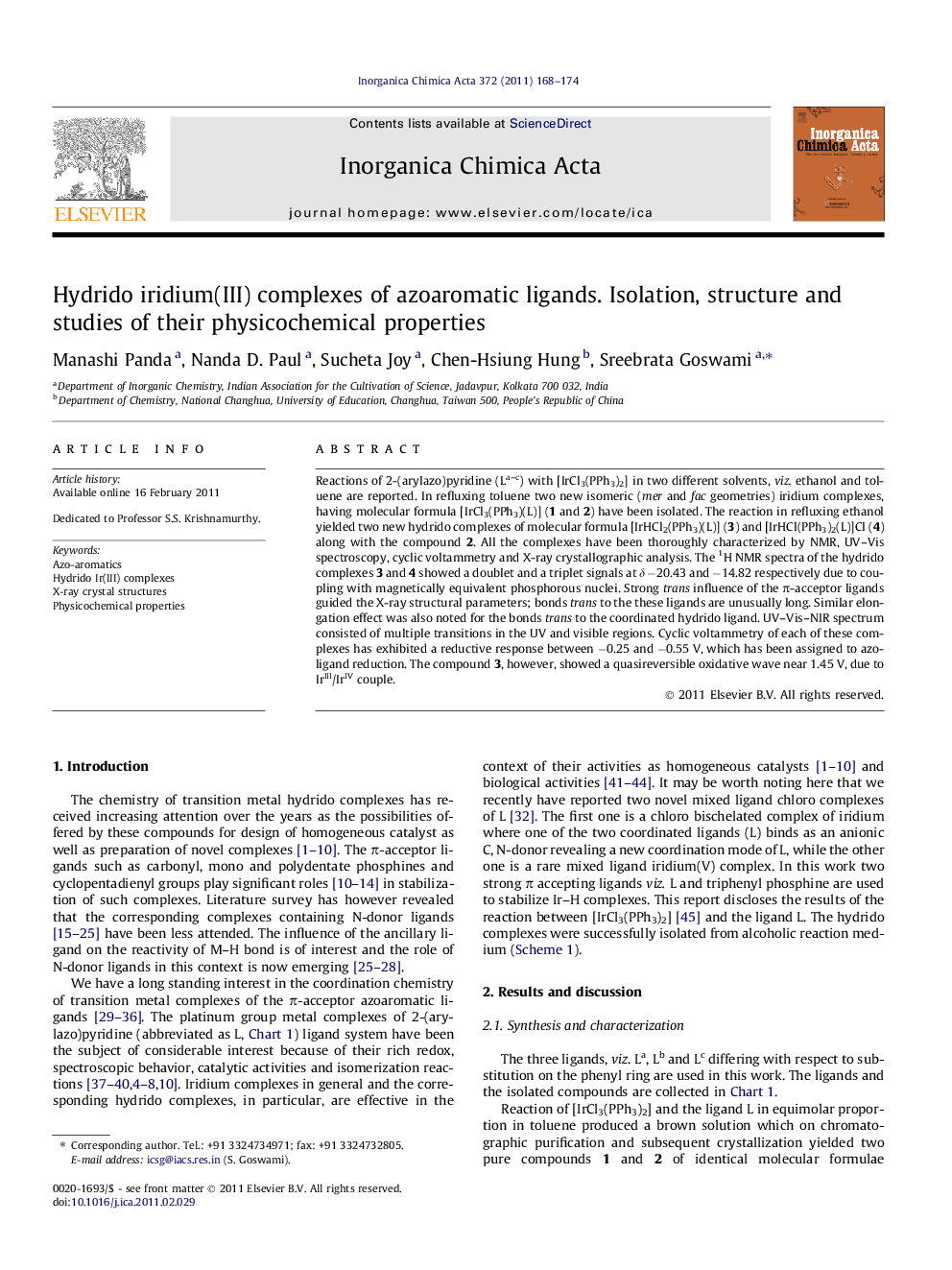| کد مقاله | کد نشریه | سال انتشار | مقاله انگلیسی | نسخه تمام متن |
|---|---|---|---|---|
| 1308887 | 975188 | 2011 | 7 صفحه PDF | دانلود رایگان |

Reactions of 2-(arylazo)pyridine (La–c) with [IrCl3(PPh3)2] in two different solvents, viz. ethanol and toluene are reported. In refluxing toluene two new isomeric (mer and fac geometries) iridium complexes, having molecular formula [IrCl3(PPh3)(L)] (1 and 2) have been isolated. The reaction in refluxing ethanol yielded two new hydrido complexes of molecular formula [IrHCl2(PPh3)(L)] (3) and [IrHCl(PPh3)2(L)]Cl (4) along with the compound 2. All the complexes have been thoroughly characterized by NMR, UV–Vis spectroscopy, cyclic voltammetry and X-ray crystallographic analysis. The 1H NMR spectra of the hydrido complexes 3 and 4 showed a doublet and a triplet signals at δ −20.43 and −14.82 respectively due to coupling with magnetically equivalent phosphorous nuclei. Strong trans influence of the π-acceptor ligands guided the X-ray structural parameters; bonds trans to the these ligands are unusually long. Similar elongation effect was also noted for the bonds trans to the coordinated hydrido ligand. UV–Vis–NIR spectrum consisted of multiple transitions in the UV and visible regions. Cyclic voltammetry of each of these complexes has exhibited a reductive response between −0.25 and −0.55 V, which has been assigned to azo-ligand reduction. The compound 3, however, showed a quasireversible oxidative wave near 1.45 V, due to IrIII/IrIV couple.
Reactions of 2-(arylazo)pyridine (L) with [IrCl3(PPh3)2] in two different solvents, viz. toluene and ethanol are reported. In refluxing toluene two new isomeric iridium complexes (mer and fac) having the molecular formula [IrCl3(PPh3)(L)] have been isolated whereas hydrido complexes of molecular formula [IrHCl2(PPh3)(L)] and [IrHCl(PPh3)2(L)]Cl are obtained in refluxing ethanol.Figure optionsDownload as PowerPoint slideHighlights
► Hydrido Ir(III) complexes containing azo-aromatic ligands are isolated from alcoholic solvent.
► These complexes have been characterized fully using several spectroscopic methods.
► X-ray structures of all the isolated complexes have been used for their authentication.
Journal: Inorganica Chimica Acta - Volume 372, Issue 1, 15 June 2011, Pages 168–174